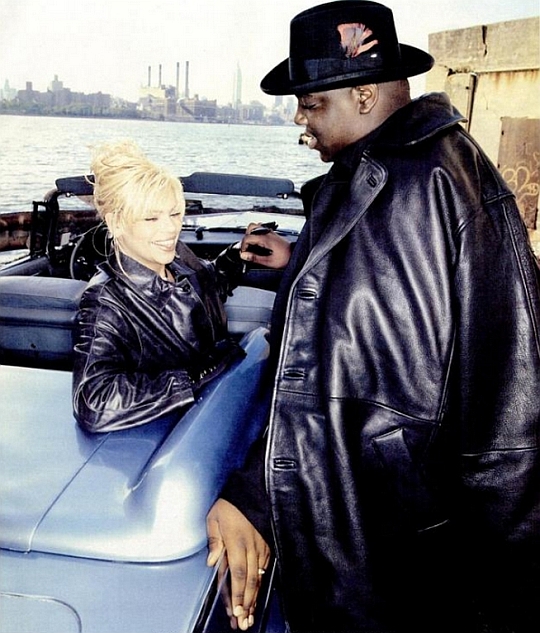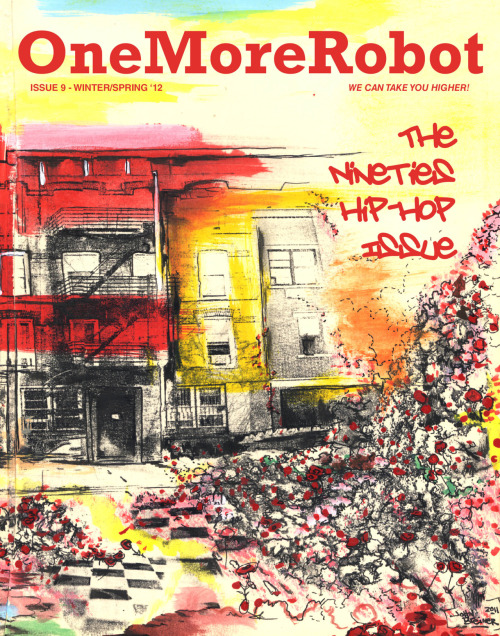So Bad

Faith and Biggie, copyright (c) 1995
From the first time I heard gravelly voiced rapper Biggie Smalls booming about "Party and Bullshit" in 1993 I was an instant fan. When his debut Ready to Die was released a year later, I played the disc so much that my girlfriend asked me, "Who do you prefer more, me or Biggie?" I knew it was a trick question, but I'm sad to say Biggie would've won, at least at that moment.
Not only was he an acute social observer and playlistic personality, but also a wonderful storyteller whose brutal words rivaled my favorite noir novelists Chester Himes and David Goodis. On the tracks "Gimmie the Loot" and "Warning," shout-out to dope producer Easy Mo Bee, the big man from Bed-Stuy dropped criminal-minded science and painted vivid pictures of the wild streets of Brooklyn. In the same breath, the brother could also reveal a tender side, giving his characters dimension that other rappers failed to deliver in their rhymes. Meanwhile, like Redd Foxx or Richard Pryor talking about sex, Biggie's bedroom vulgarity was often very funny.
Although I won't pretend that we were friends or anything, I did have pleasure of being in his company a few times and was surprised by how laidback and cool the brother could be. We even blazed an el together the night I went to the Hit Factory to interview Lil Kim for my "In the Studio" (Vibe) column in 1996. Kim was recording her album Hard Core. When I walked through the glass doors of the studio, Big's boys stared at me as though I was a hired killer. Tupac had been killed a few months before, but the East Coast/West Coast Was was still in effect.
The room went mad quiet as a bunch of blunt puffing hard rocks stopped smoking and eyeballed me closely. Finally, after determining that I wasn't a threat, someone finally screamed, "Yo, I think that's the nigga from the magazine." However, as we well know, their caution wasn't unwarranted . A few months later, Biggie too would be dead.
A few days before his death, I was assigned by The Source to review Life After Death. Having received an advance cassette from a Bad Boy insider that Friday afternoon, I listened to the album all week-end as though it were on a continuous loop. Come early Sunday morning, still wearing the headphones and b-boy nodding, my girlfriend opened the door and told me Biggie had been killed in California. At first I thought she was kidding, some kind of sick joke on her part. Yet, after tuning in to Hot-97, me and the rest of New York City got the news that Biggie was gone. Without saying another word, I turned off the stereo, crawled into bed and cried.
Almost fifteen years after his death, I'm still fascinated by The Notorious and his music. The way that Greil Marcus will write about Bob Dylan at any opportunity, is the way I feel about documenting the life and art of Biggie Smalls. Although his career didn't last as long as the Minneapolis mumbler, Biggie has become my Bob Dylan and this week two new essays by the Blackadelic Kidd (that's me) will be published on the subject. The first piece "Forever" serves as the introduction to XXL's special Notorious B.I.G. issue. Props to Vanessa Satten, Jayson Rodriguez and Dave Bry. The same issue also features an excellent essay on the aural dopeness of 1997 by writer Shaheem Reid.

http://www.xxlmag.com/
The second essay "The Ballad of Faith and Biggie," published in the Irish pop culture magazine "One More Robot," dives deep into the murky waters of Bad Boy's history, music and mythology. Based on interviews with Faith Evans, Aliya S. King, Bevy Smith and others, this piece of pop documentation was a favorite to research and write. As Faith so brilliantly summarized about the early years of the the seminal label, "Bad Boy wasn't always perfect, but some great music came out of that chaos."
Being that editor/publisher Dean Van Nguyen decided to make this the "Nineties Hip-Hop" issue, the magazine also features an essay on Hype Williams by Miles Marshall Lewis, a piece on Pac by Charles R. Braxton and an art portfolio by Andre LeRoy Davis, the black Jack Davis. In addition their is a bad mojo wrap-around cover piece by John Breiner.

http://www.
Labels: Bad Boy, Faith, New York City Fiction, One More Robot, The Notorious B.I.G., XXL

